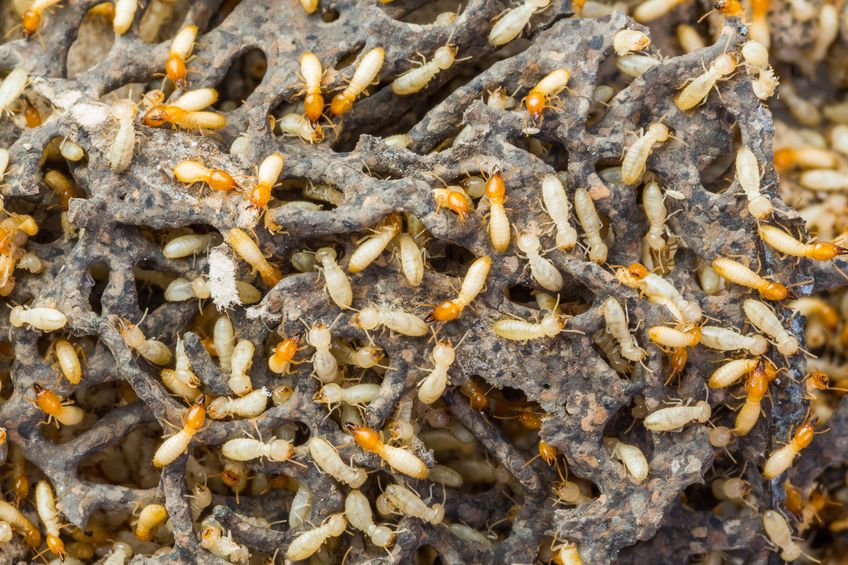Subterranean termites are eusocial insects that live in colonies beneath the ground where workers regularly tunnel through soil in search of food. The eastern subterranean termite is the most destructive pest of homes in the US, and they are abundant in Boston and surrounding suburban areas. After new colonies are initiated by reproductive swarmers known as alates, colonies are slow to grow in population size. However, after five to seven years of maturation, colonies grow to contain tens of thousands of individual termites, most of which are workers that forage and carry out other duties. Colonies can grow to contain well over one million individuals, but any colony more than a few years old can pose a threat to nearby homes. Only workers nest within structural wood, which they can detect while foraging. Workers will readily infest substructural wood that is in contact with the ground, but infesting above ground substructural wood members at the base of timber-framed homes is more challenging for the pests.
Subterranean termites must remain within moist soil or wood, as they are highly dependent on moisture and will rapidly dry up and die if they become exposed to the outside air. In order to avoid this, workers have the remarkable ability to create air tight mud tubes that protrude from the ground and make contact with above ground substructural wood around foundations. Mud tubes are often found vertically situated on exterior foundation walls where they serve as the most common sign that an infestation has been established. Unfortunately, mud tubes are not always so conspicuous, and the locations where they are found differ depending on foundation types.
In crawl spaces homes, both the interior and exterior foundation walls should be inspected annually for the presence of mud tubes. Entering crawl spaces may be unpleasant, but termite damage and mud tubes, if they exist, are most likely to be found in crawl spaces. Mud tubes may also be found protruding from the middle of the ground within crawl spaces, not just along foundation walls. When it comes to homes built on concrete slabs, mud tubes often protrude through cracks on concrete flooring, and through the spaces surrounding pipe penetrations. Slab on ground homes are particularly vulnerable to subterranean termite damage because workers easily reach structural wood by building mud tubes that penetrate expansion joints and other spaces as narrow as 1/32 of an inch wide.
Have you ever inspected your crawl space for signs of subterranean termites and related damage?

